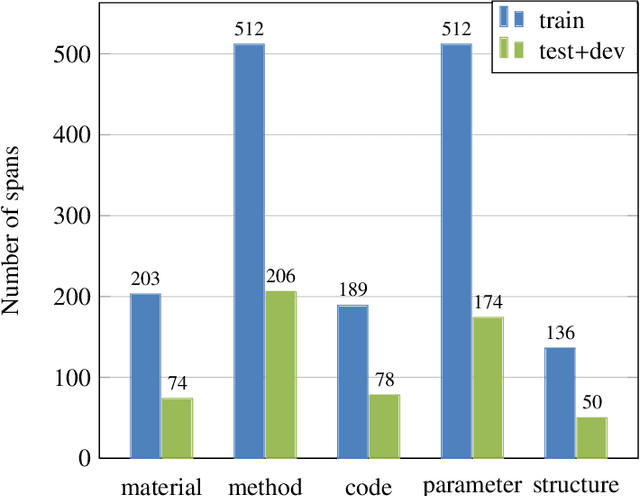Satadeep Bhattacharjee
LLM Meets Diffusion: A Hybrid Framework for Crystal Material Generation
Oct 27, 2025Abstract:Recent advances in generative modeling have shown significant promise in designing novel periodic crystal structures. Existing approaches typically rely on either large language models (LLMs) or equivariant denoising models, each with complementary strengths: LLMs excel at handling discrete atomic types but often struggle with continuous features such as atomic positions and lattice parameters, while denoising models are effective at modeling continuous variables but encounter difficulties in generating accurate atomic compositions. To bridge this gap, we propose CrysLLMGen, a hybrid framework that integrates an LLM with a diffusion model to leverage their complementary strengths for crystal material generation. During sampling, CrysLLMGen first employs a fine-tuned LLM to produce an intermediate representation of atom types, atomic coordinates, and lattice structure. While retaining the predicted atom types, it passes the atomic coordinates and lattice structure to a pre-trained equivariant diffusion model for refinement. Our framework outperforms state-of-the-art generative models across several benchmark tasks and datasets. Specifically, CrysLLMGen not only achieves a balanced performance in terms of structural and compositional validity but also generates more stable and novel materials compared to LLM-based and denoisingbased models Furthermore, CrysLLMGen exhibits strong conditional generation capabilities, effectively producing materials that satisfy user-defined constraints. Code is available at https://github.com/kdmsit/crysllmgen
MatSciRE: Leveraging Pointer Networks to Automate Entity and Relation Extraction for Material Science Knowledge-base Construction
Jan 18, 2024Abstract:Material science literature is a rich source of factual information about various categories of entities (like materials and compositions) and various relations between these entities, such as conductivity, voltage, etc. Automatically extracting this information to generate a material science knowledge base is a challenging task. In this paper, we propose MatSciRE (Material Science Relation Extractor), a Pointer Network-based encoder-decoder framework, to jointly extract entities and relations from material science articles as a triplet ($entity1, relation, entity2$). Specifically, we target the battery materials and identify five relations to work on - conductivity, coulombic efficiency, capacity, voltage, and energy. Our proposed approach achieved a much better F1-score (0.771) than a previous attempt using ChemDataExtractor (0.716). The overall graphical framework of MatSciRE is shown in Fig 1. The material information is extracted from material science literature in the form of entity-relation triplets using MatSciRE.
CrysGNN : Distilling pre-trained knowledge to enhance property prediction for crystalline materials
Jan 14, 2023Abstract:In recent years, graph neural network (GNN) based approaches have emerged as a powerful technique to encode complex topological structure of crystal materials in an enriched representation space. These models are often supervised in nature and using the property-specific training data, learn relationship between crystal structure and different properties like formation energy, bandgap, bulk modulus, etc. Most of these methods require a huge amount of property-tagged data to train the system which may not be available for different properties. However, there is an availability of a huge amount of crystal data with its chemical composition and structural bonds. To leverage these untapped data, this paper presents CrysGNN, a new pre-trained GNN framework for crystalline materials, which captures both node and graph level structural information of crystal graphs using a huge amount of unlabelled material data. Further, we extract distilled knowledge from CrysGNN and inject into different state of the art property predictors to enhance their property prediction accuracy. We conduct extensive experiments to show that with distilled knowledge from the pre-trained model, all the SOTA algorithms are able to outperform their own vanilla version with good margins. We also observe that the distillation process provides a significant improvement over the conventional approach of finetuning the pre-trained model. We have released the pre-trained model along with the large dataset of 800K crystal graph which we carefully curated; so that the pretrained model can be plugged into any existing and upcoming models to enhance their prediction accuracy.
MatScIE: An automated tool for the generation of databases of methods and parameters used in the computational materials science literature
Sep 15, 2020



Abstract:The number of published articles in the field of materials science is growing rapidly every year. This comparatively unstructured data source, which contains a large amount of information, has a restriction on its re-usability, as the information needed to carry out further calculations using the data in it must be extracted manually. It is very important to obtain valid and contextually correct information from the online (offline) data, as it can be useful not only to generate inputs for further calculations, but also to incorporate them into a querying framework. Retaining this context as a priority, we have developed an automated tool, MatScIE (Material Scince Information Extractor) that can extract relevant information from material science literature and make a structured database that is much easier to use for material simulations. Specifically, we extract the material details, methods, code, parameters, and structure from the various research articles. Finally, we created a web application where users can upload published articles and view/download the information obtained from this tool and can create their own databases for their personal uses.
 Add to Chrome
Add to Chrome Add to Firefox
Add to Firefox Add to Edge
Add to Edge